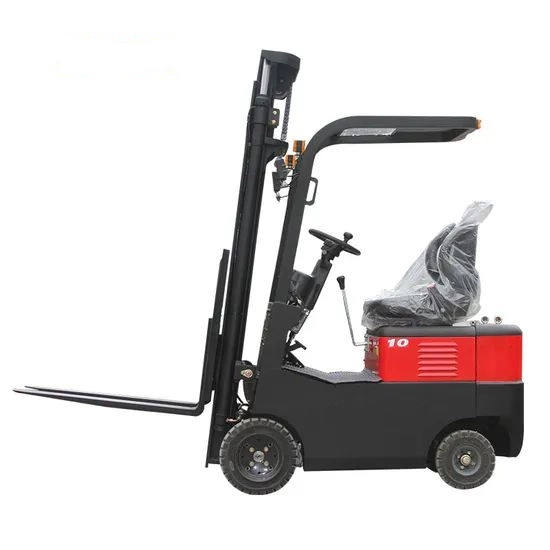The service life of electric forklift batteries is affected by factors such as battery type, usage habits, and maintenance. It is usually measured by the number of charge-discharge cycles or years of use, and there are significant differences under different circumstances. The details are as follows:

I. Service Life Range of Common Battery Types
Currently, there are mainly two types of batteries commonly used in electric forklifts, with obvious differences in their service lives:
Lead-acid batteries (mainstream)
- Cycle life: Usually 1000-1500 charge-discharge cycles (a full charge and discharge counts as one cycle).
- If charged and discharged once a day, it can be used for approximately 3-5 years; if used frequently (such as 2 cycles a day), the service life may be shortened to 2-3 years.
- Influencing factors: Over-discharge (continuing to use when the power is less than 20%), untimely charging, long-term undercharging or overcharging will significantly shorten the service life.
Lithium batteries (emerging trend)
- Cycle life: Generally 2000-5000 charge-discharge cycles, and high-quality lithium batteries can reach more than 6000 cycles.
- Calculated by one cycle per day, the service life can be as long as 5-10 years, which is 2-3 times that of lead-acid batteries.
- Advantages: Stronger deep discharge resistance, higher tolerance to charge-discharge conditions, and slower attenuation rate.
II. Key Factors Affecting Battery Life
Charge-discharge habits
- Lead-acid batteries: They are most afraid of "deep discharge" (power less than 20%) and "long-term storage with insufficient power", which will cause plate sulfation and rapid capacity decline; overcharging will cause electrolyte evaporation and plate corrosion.
- Lithium batteries: Although they support deep discharge, long-term storage with full charge (especially in high-temperature environments) will accelerate aging. It is recommended to keep 50%-70% power when not in use for a long time.
Maintenance
- Lead-acid batteries: It is necessary to regularly check the electrolyte level (for water-adding types) and add distilled water (do not add electrolyte); keep the electrodes clean to avoid corrosion; perform regular equalizing charging (once a month) to prevent voltage imbalance of single batteries.
- Lithium batteries: Although maintenance-free, attention should be paid to the charging environment temperature (avoid charging below 0℃ or above 40℃), and regularly check whether the battery pack connecting wires are loose and whether the shell is damaged.
Usage environment
- Temperature: High temperature (>35℃) will accelerate the internal chemical reaction of the battery, leading to faster capacity attenuation; low temperature (<0℃) will reduce the charge-discharge efficiency, and long-term use at low temperatures will also shorten the service life.
- Working conditions: Frequent heavy loads, sudden acceleration/deceleration will increase the instantaneous load of the battery and aggravate losses.
III. Practical Tips to Extend Battery Life
- Lead-acid batteries: Charge in time after each use to avoid running out of power; ensure good ventilation during charging and cut off the power in time after full charge; regularly clean the electrodes and apply Vaseline to prevent corrosion.
- Lithium batteries: Use the original charger and avoid mixing; avoid long-term operation or charging in extreme temperatures; regularly perform "shallow charge and shallow discharge" (instead of full charge each time) to extend the cycle life.
- Common points: Regularly check the battery appearance (whether there is bulging, leakage, or deformation), stop using and overhaul in time if abnormalities are found; formulate a reasonable charging cycle according to the forklift usage intensity (such as charging at a fixed time every day to avoid fragmented charging).
Summary
- Lead-acid batteries: With a service life of about 3-5 years (1000-1500 cycles), they require careful maintenance and are suitable for scenarios with limited budgets and moderate usage intensity.
- Lithium batteries: With a service life of about 5-10 years (2000-5000 cycles), they are easy to maintain and suitable for high-frequency use and scenarios pursuing low replacement costs.


